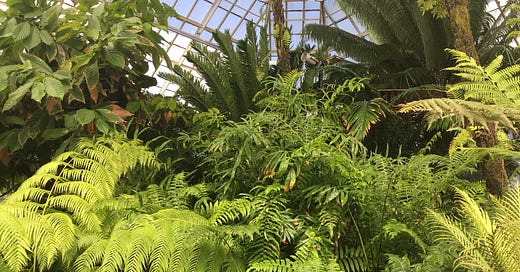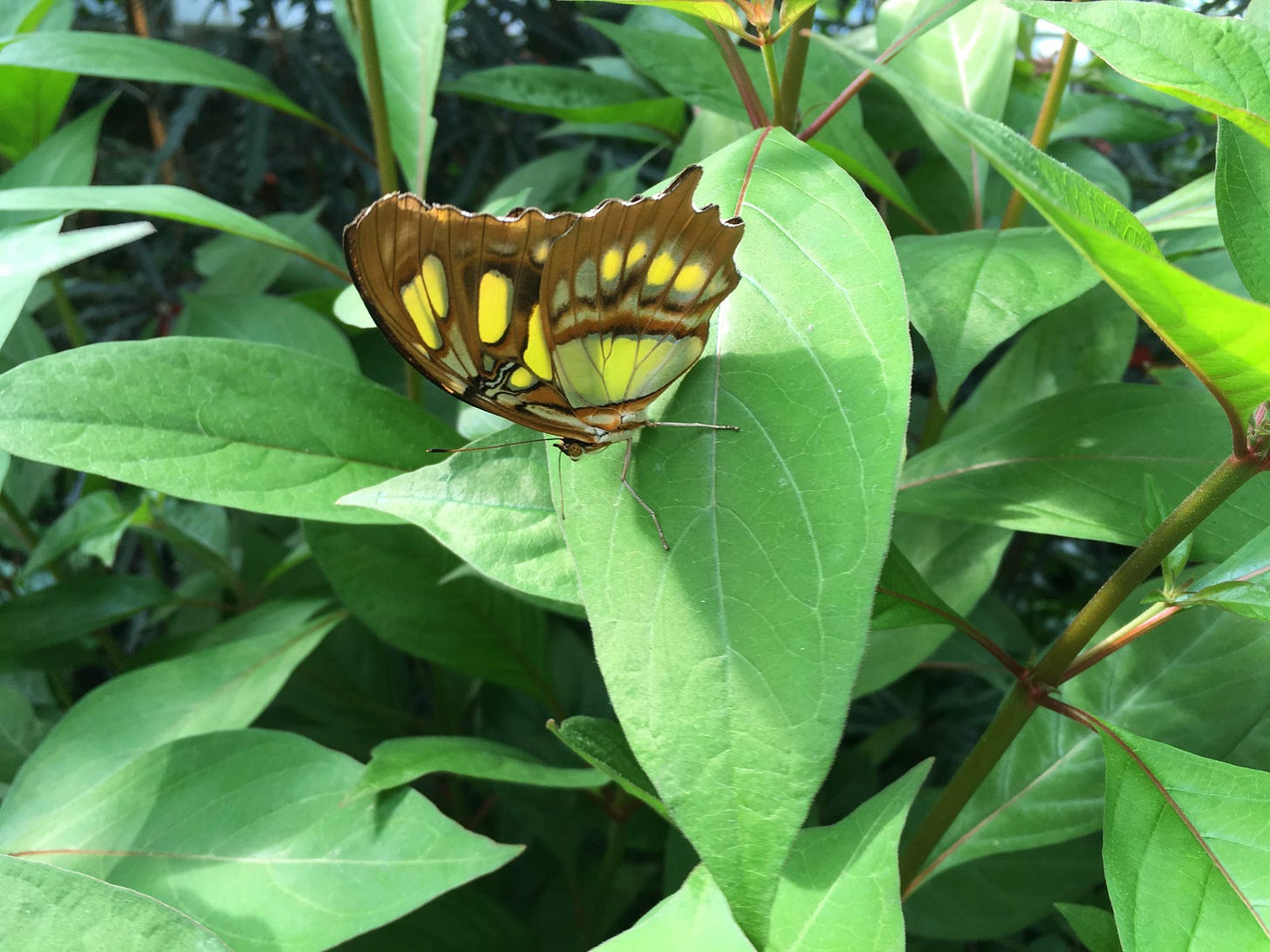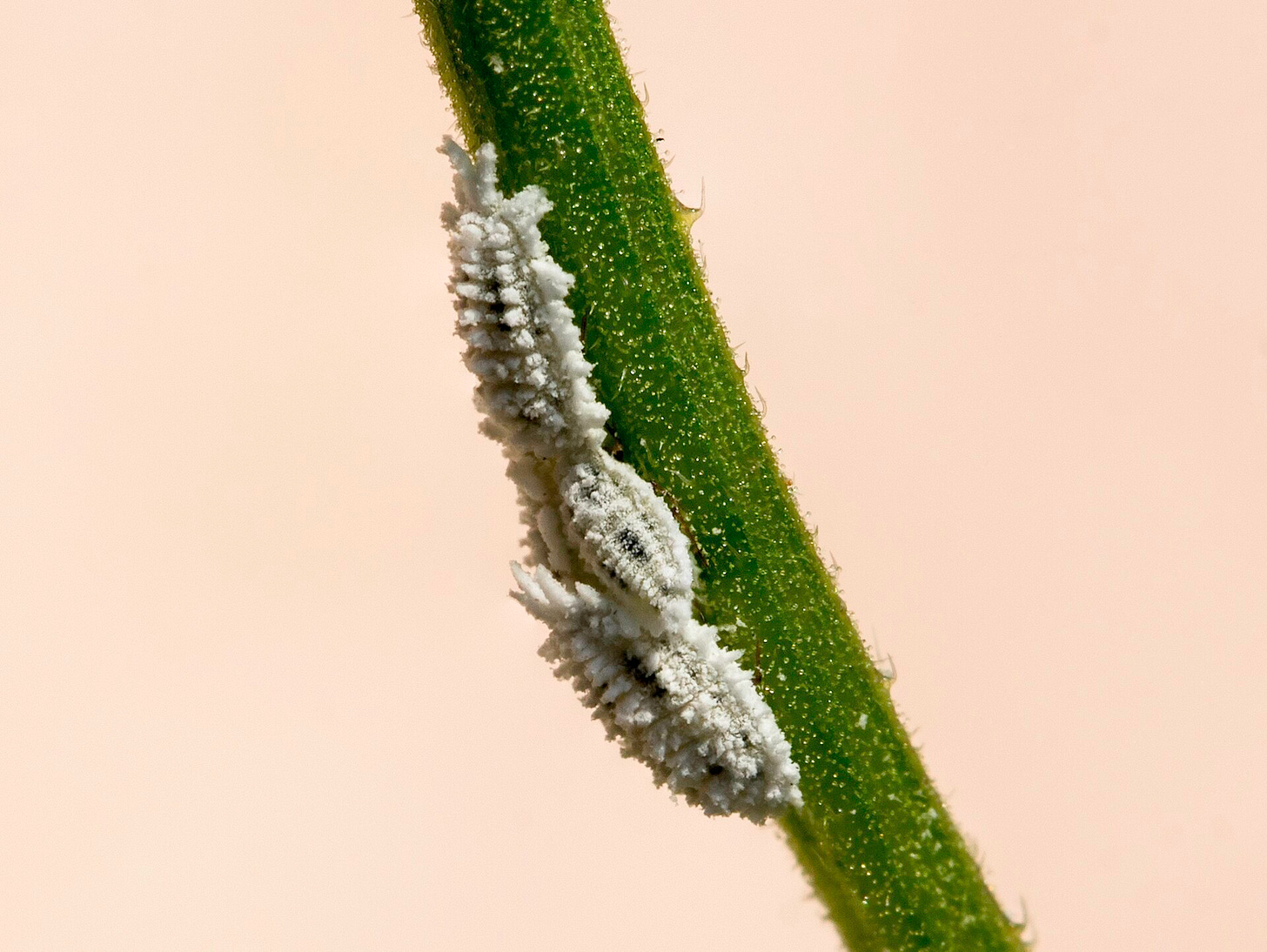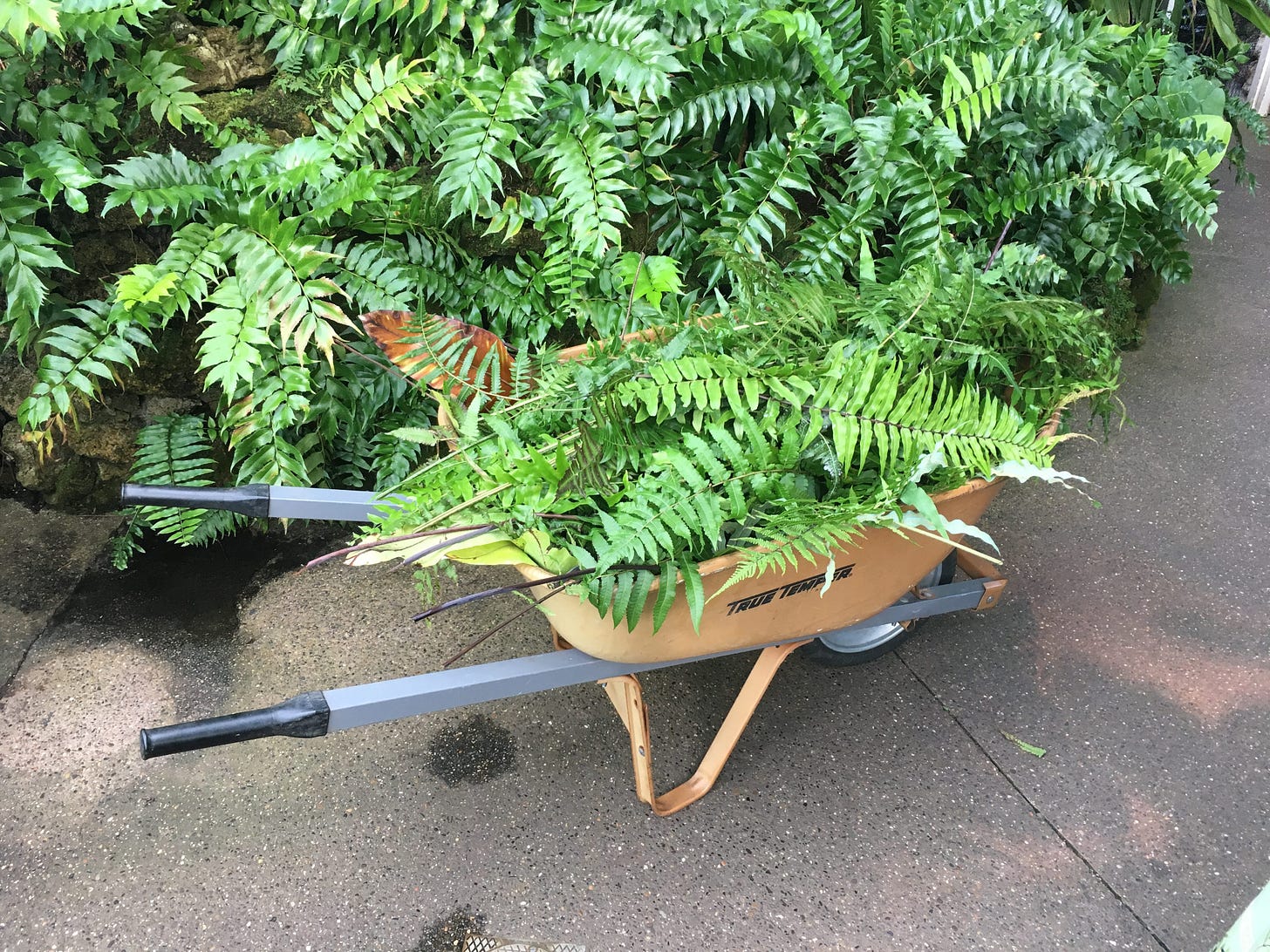Meet the Tiny Fuzzy Vampires Lurking in Most Greenhouses
Biological control and the small battles taking place inside Phipps Conservatory
Like a green menace, weedy oxalis appears in every open patch of soil in the fern room. It’s staging its annual takeover. It won’t last long. By summer, the ferns will have crowded it out again. It’s just that season.
While volunteering in the fern and stove rooms at Phipps Conservatory over the last five years I’ve started to notice the unique rhythms of the botanical year. Some of these annual patterns are instilled by the plants and others are led by the humans. The exhibits team install lights before the holiday season. The fig tree drops hundreds of fruits on the ground. The horticulture staff does a major pruning in the spring in preparation for the butterflies that move in every summer.
Last week I was reminded that some of these cyclical patterns are not plant or human based. I showed up to volunteer and found members of Phipps’ horticulture team dressed head to toe in white coveralls. It seemed to be raining tiny bits of cottony fluff as they pointed a high pressure stream of water at a group of cycads. The staff was attempting to take down the mealybugs that gain a hold each winter.
Mealybugs are tiny – somewhere between 1/5th to 1/20th of an inch – but in a relatively short amount of time their population can boom. Each female mealybug can lay up to 600 eggs at a time. There’s also one variety of mealybug that bears live young, which is sort of wild to think about. Each insect is covered in a cottony wax which makes it look less like an insect and more like a fuzzy growth, especially when they’re clustered together on the stem of a plant.
Like little furry vampires, mealybugs bite into a plant’s stem and suck out its juices which can weaken or even defoliate a plant. They also excrete a sticky residue which attracts sooty mold fungus which isn’t inherently harmful but, in great numbers, it can disrupt normal photosynthesis.
Phipps practices integrated pest management which means that they take an environmentally sensitive approach to dealing with mealybugs and other unwelcome visitors. In addition to pressure washing and using a range of essential oils, they also release natural predators of the insects they’re trying to target. In the case of mealybugs, those natural predators are Cryptolaemus montrouzieri. I’d heard folks at Phipps talk about this method of pest management before but last week I got my first good look at Cryptolaemus montrouzieri. I imagined these pest treatments looking like a powder you sprinkle around the space like some sort of room deodorizer. In fact, they release full grown Cryptolaemus montrouzieri beetles and because there’s so much prey/food for them in this environment, they’ve been reproducing. I was pointed towards one of their larva, which – like the mealybug – is also fuzzy, and was wriggling around a mossy stone.
I was so charmed by this little creature, which is sometimes referred to as the “mealybug destroyer.” They’re native to eastern Australia and entomologist Albert Koebele first brought them to America in the 1890s. Koebele was a biological control pioneer and he’d been looking for a natural predator of the citrus mealybug that had been attacking citrus trees across California. These mealybug destroyers were shockingly efficient and they’re still used commercially in citrus orchards and inside greenhouses across the globe. Note that not all attempts at biological control end well. Ever heard of cane toads?
After five years of pruning plants and watering ferns here, I’m still constantly discovering new things in this corner of the conservatory. With plants especially, I feel like you can always zoom in or zoom out and discover a whole new world of botanical interactions. What other creatures, microscopic or otherwise, call this place home?
Have you discovered any tiny narratives in your garden or local conservatory? Or have you learned about any interesting biological control methods? I’d love to hear about them.
And one more thing: I make an appearance in Brooke’s Substack,
, this week. Here we are, depicted as old-timey vaudevillian performers:You can read the whole comic here.












I thought this was going to be about spiders (we occasionally get small hunting spiders in the indoor light garden).
A neem oil/horticultural soap mix and/or drench does a pretty good job cleaning up mealybugs.
When I inherited the greenhouse attendant position at the Fort Worth Botanic Garden the plants were infested with mealybugs. They were trying to do IPM there as well so I tried several sprayings of Neem Oil (had I known about the mealybug predators I would have tried them too). But, alas, the Neem Oil was a waste of time so I resorted to a systemic treatment with Imidacloprid. It worked quite well, maybe not the most environmental solution but the plants were finally happy to be relieved of their long infestation.